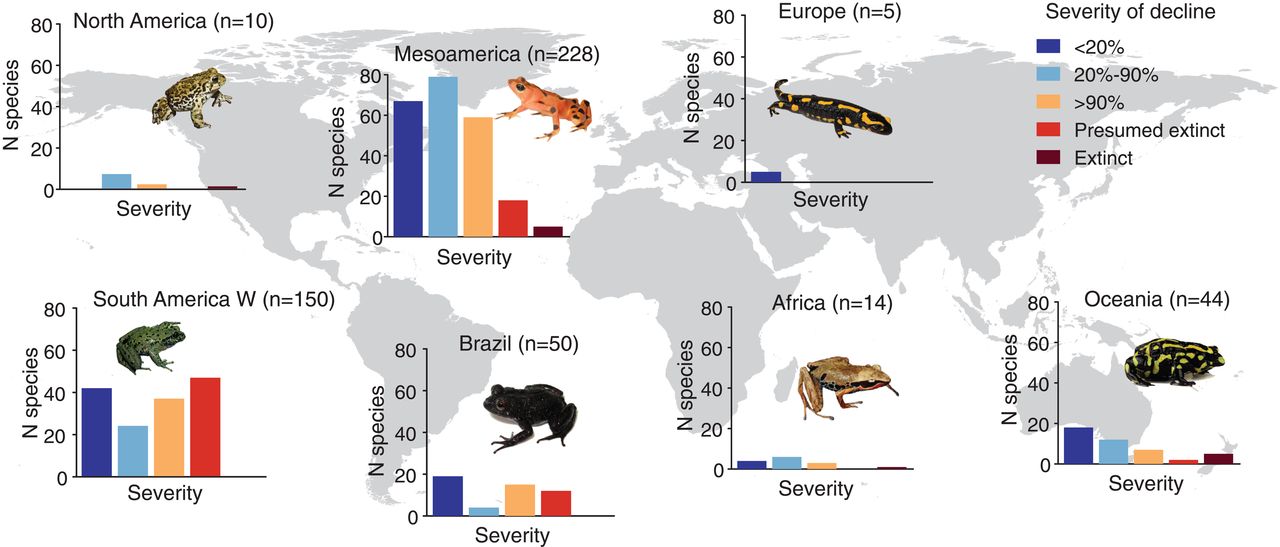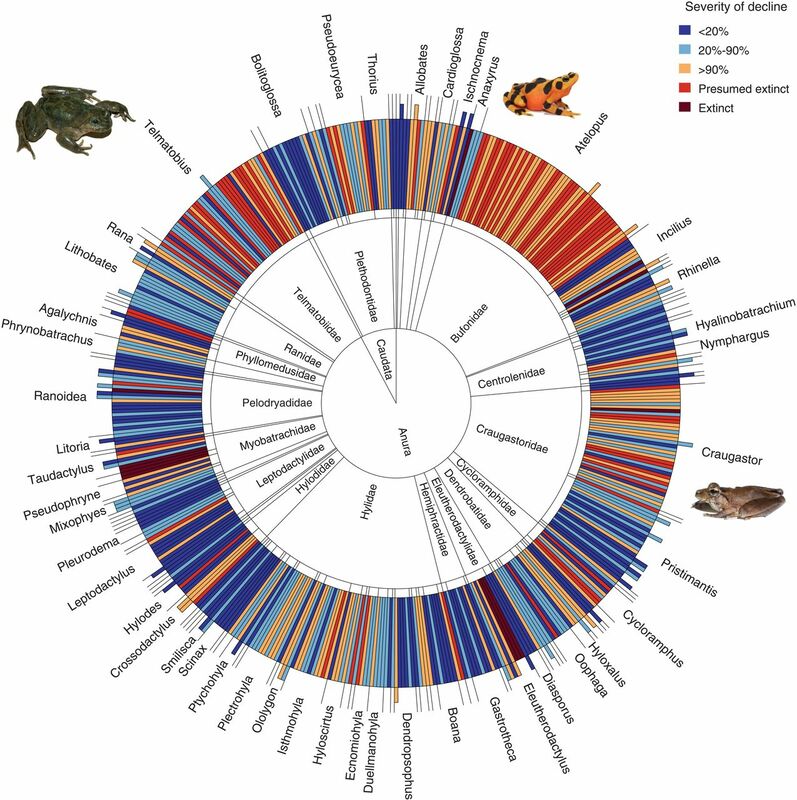|
Our lab contributed to a comprehensive assessment of the consequences of the spread of chytrid fungus on the diversity of amphibians on all continents published today in Science. We knew chytridiomycosis, a fungal disease caused by Batrachochytrium dendrobatidis and B. salamandrivorans, can cause large declines in species richness and abundance from focal studies conducted at specific sites. However, we still lacked an answer to a common question when communicating the threat this disease poses to amphibians: how many species are affected, globally, by chytridiomycosis? Thanks to our study, led by Dr. Ben Scheele in collaboration with an international team of more than three dozen researchers, we know now the answer. And the numbers are worse than most people suspected, with over 500 species negatively affected and at least 90 species presumed extinct because of chytridiomycosis. As shown in the figure below, all groups of amphibians are affected, by some genera such as Atelopus, Craugastor and Telmatobius have lost many more species, or contain species with severe declines, than other groups. News coverage: The Atlantic| Science | NYTimes | Guardian | National Geographic | Washington Post | Wired | BBC Wildlife | BBC News | Scientific American | FIU News
0 Comments
|
Archives
June 2024
CATENAZZI LABNews from the lab Categories |


 RSS Feed
RSS Feed